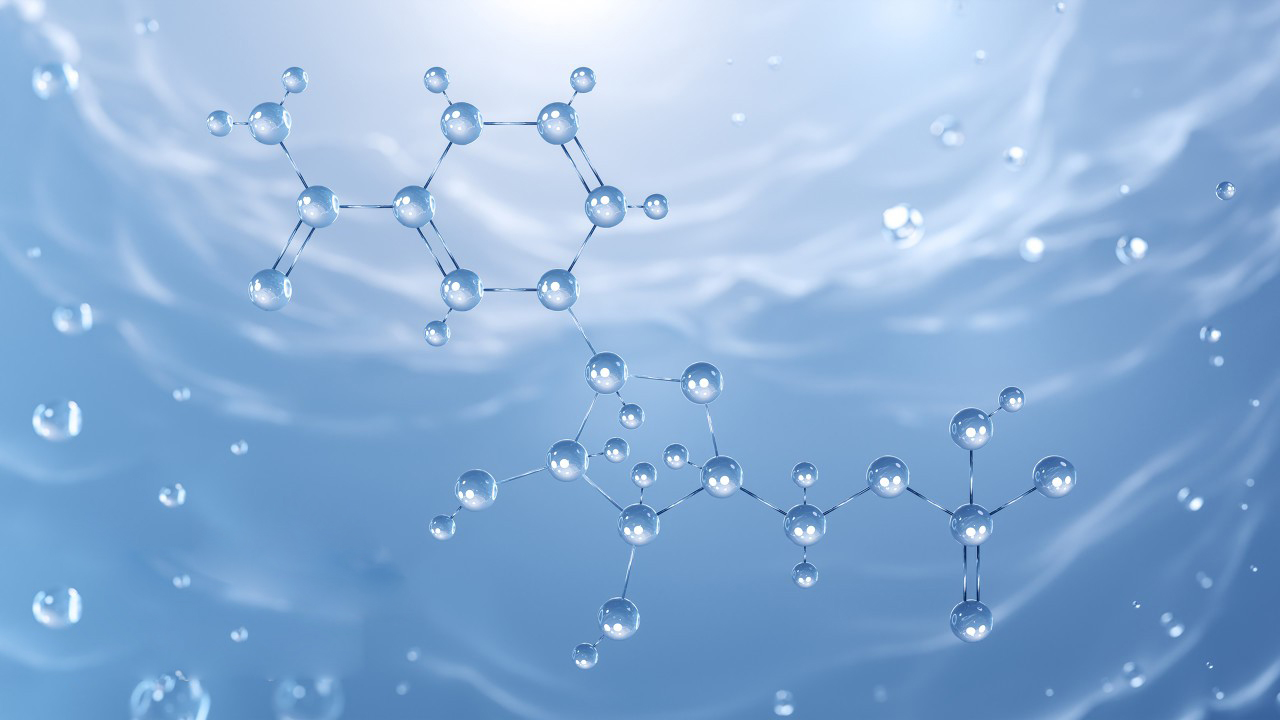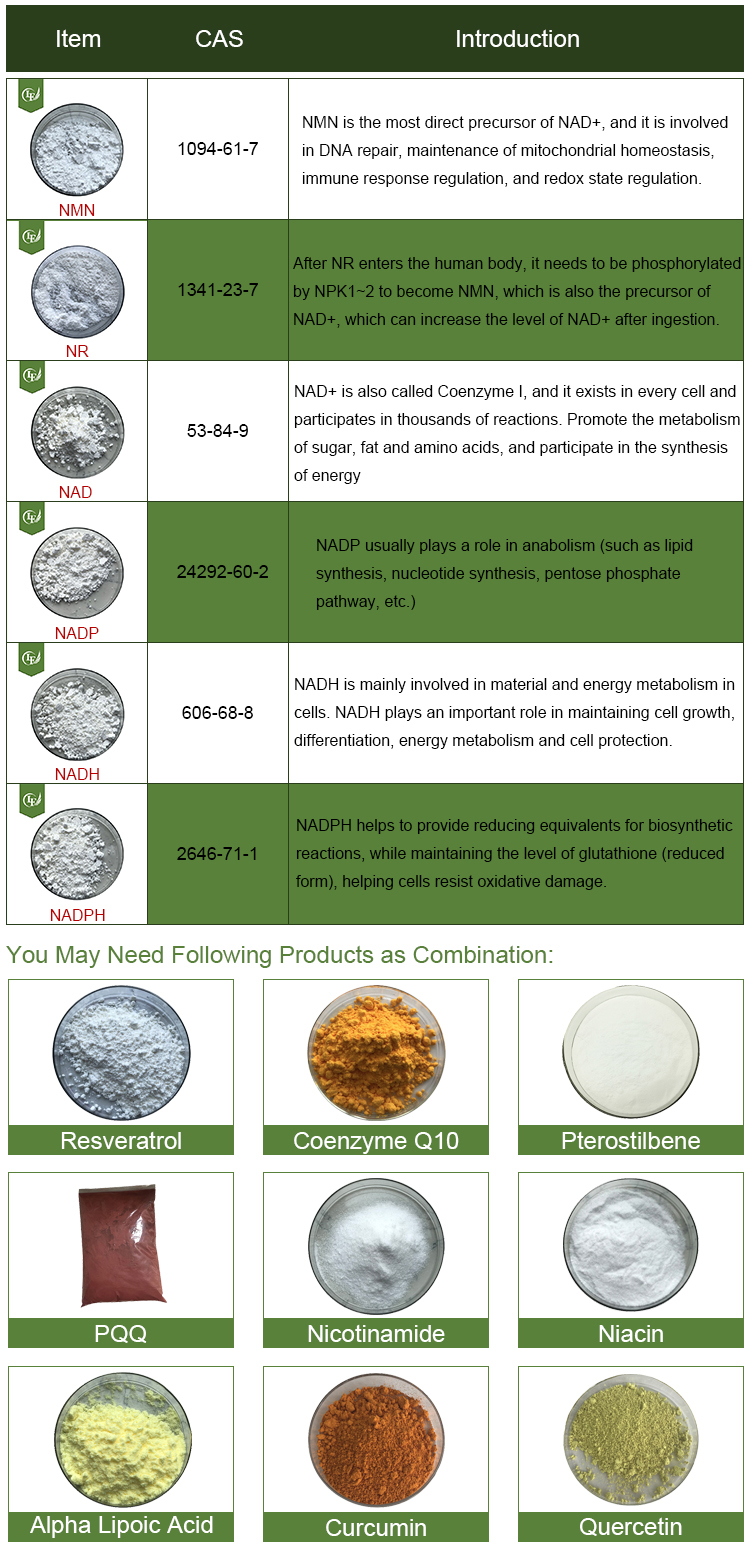NMN, or Nicotinamide Mononucleotide, is a molecule that has garnered significant attention in the field of aging and longevity research due to its potential role in increasing NAD+ (Nicotinamide Adenine Dinucleotide) levels in cells. NAD+ is a coenzyme involved in various cellular processes, including energy metabolism and DNA repair. NMN is believed to help raise NAD+ levels, which may have various health benefits.
Here are the materials and methods typically used for studying NMN in a laboratory setting:

Materials of NMN:
1.Nicotinamide Mononucleotide (NMN): Pure NMN is required for the experiments. It can be purchased from chemical suppliers.
2.Cell Culture: Depending on the study, researchers may use different cell lines for in vitro experiments. Common choices include human cell lines like HEK293 or mouse cell lines.
3.Laboratory Animals: For in vivo studies, researchers use laboratory animals like mice or rats. These animals are used to test the effects of NMN on lifespan, health, and various physiological parameters.
4.Reagents and Buffers: Various reagents and buffers are needed for cell culture, biochemical assays, and other experiments.
5.Laboratory Equipment: This includes items such as centrifuges, incubators, spectrophotometers, and other instruments for conducting experiments and analyzing results.
Methods of NMN:
1.Cell Culture Experiments:
- Cell Culture Maintenance: Cultured cells are maintained under controlled conditions (temperature, humidity, and CO2 levels).
- NMN Treatment: Cells are treated with NMN at various concentrations to assess its effects.
- Viability Assays: Cell viability can be determined using assays like MTT or ATP assays to assess the impact of NMN.
2.Biochemical Assays:
- NAD+ Levels: Researchers measure NAD+ levels before and after NMN treatment to determine its effect.
- Western Blotting: This technique is used to analyze protein expression levels, which may be affected by NMN treatment.
3.In Vivo Studies:
- Animal Handling: Laboratory animals are used to study the effects of NMN in a living system. They are typically divided into control and experimental groups.
- NMN Administration: NMN can be administered to animals through various routes, such as oral gavage or intraperitoneal injection.
- Data Collection: Researchers monitor the animals for various health parameters, including lifespan, metabolic markers, and age-related diseases.
- Tissue Analysis: Upon completion of the study, tissues and organs are collected for further analysis, including NAD+ levels, gene expression, and histology.

4.Data Analysis: Collected data is analyzed statistically to determine the significance of any effects observed. This may involve techniques like t-tests, ANOVA, and survival analysis (for lifespan studies).
5.Publication: The results of the study are typically compiled and published in scientific journals for peer review and dissemination to the scientific community.
It’s important to note that research on NMN is ongoing, and its potential health benefits are still being explored. When conducting experiments involving NMN, researchers should follow ethical guidelines and obtain any necessary approvals, such as from institutional animal care and use committees (IACUC), when using laboratory animals.
